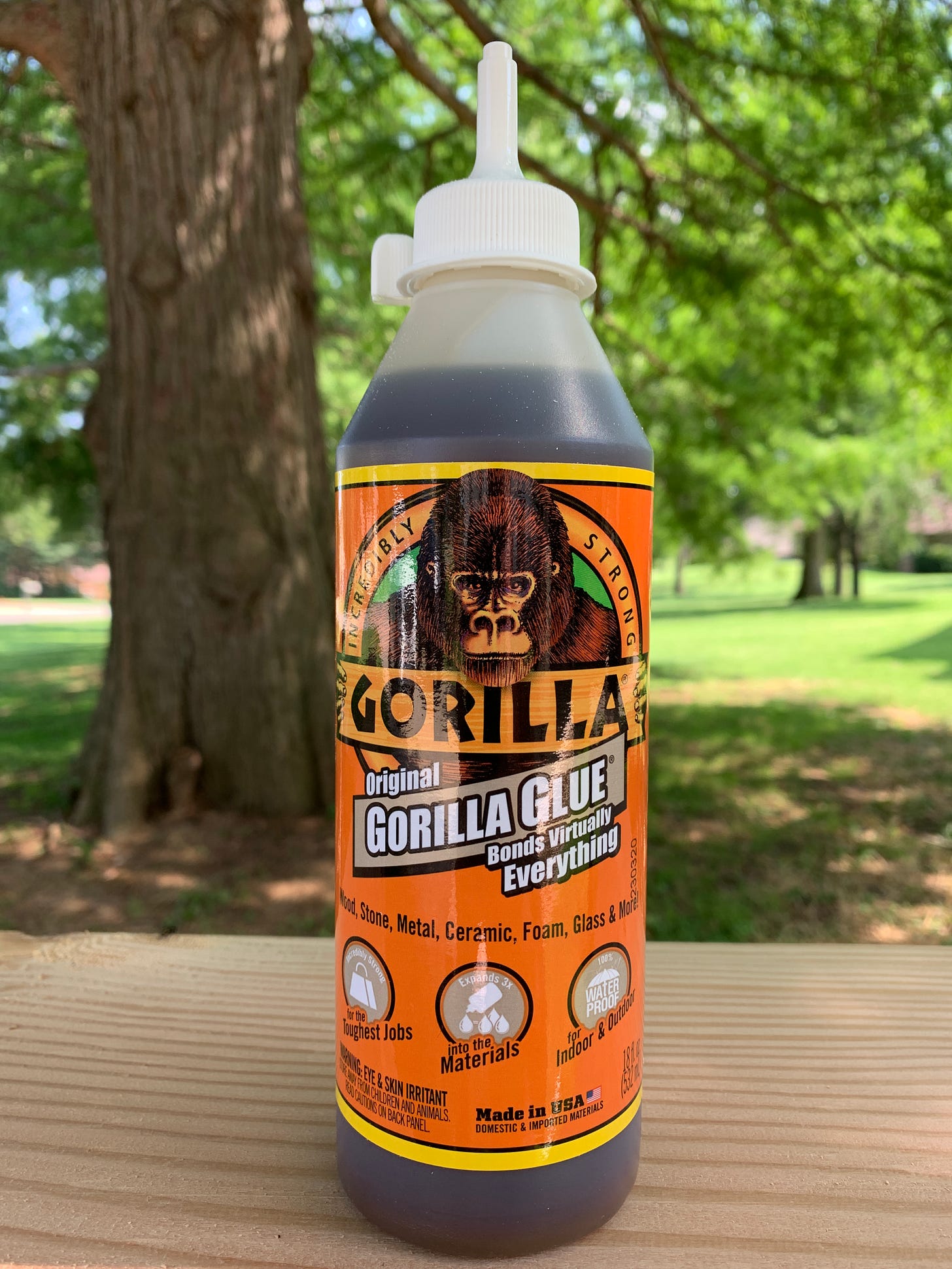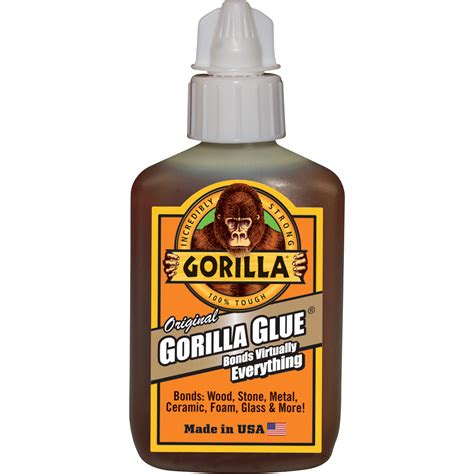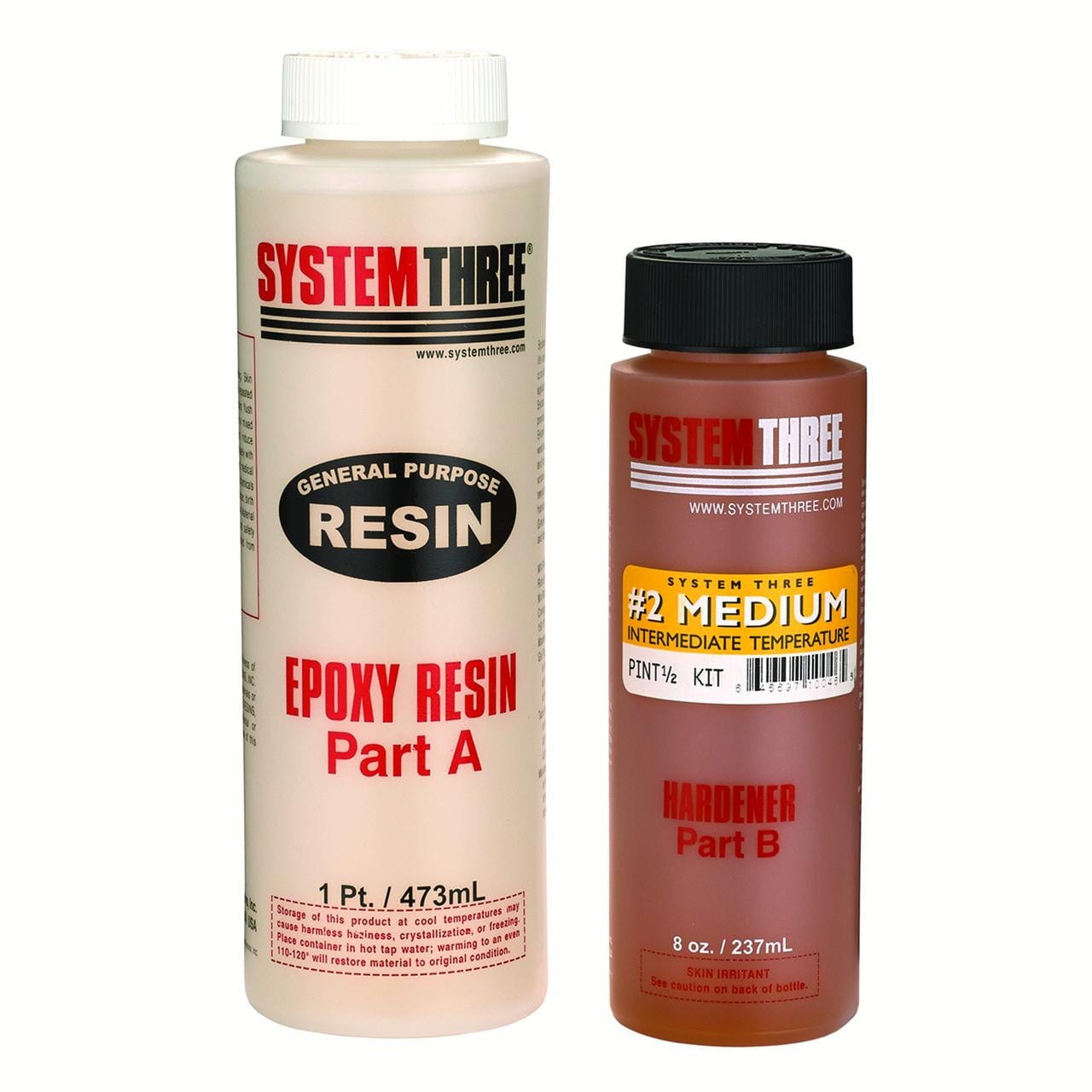Gorillas are not all purpose...
It's rough out there in the woodworking jungle!
Field Notes: Observations from the Workshop Environment
See that office, the third one from the left? That's the office of the marketer who ruined your woodworking project last Saturday.
I know you're thinking this sounds ridiculous, but let me explain…
It's Saturday morning, and you're walking down the aisle of your favorite hardware store, looking for glue for your newest woodworking project. Scanning the shelves, an orange bottle catches your eye: Gorilla Glue, with its catchy gorilla logo. The label claims it bonds almost everything. Sounds good, right? However, it conveniently omits a crucial detail about how it cures, which makes it unsuitable for most uses.
Gorilla Glue is a polyurethane adhesive that uses moisture to trigger a chemical reaction for curing. When it cures, it expands significantly. You're probably thinking that doesn'
t sound ideal, and you're right. The expansion causes the glue to run out of joints and down your wood surfaces (as in the picture).
As a polymer, it also seals wood pores, and if not properly milled off or heavily sanded, it will cause spotting in your finish coats later. This glue is not suitable for final wood assembly or furniture repairs—it can ruin your project.
So why doesn't Gorilla Glue make this apparent to consumers? It comes down to simple marketing... the bad kind.
Before Gorilla Glue hit the shelves, those of us in the woodworking community were aware of this foaming issue and used polyurethane glue accordingly. It was primarily used for glue-ups that would be milled down later, cutting away all the drips and smears. This eliminated the spotting problem.
Don't get me wrong, polyurethane glue is a great adhesive, but it has limited uses.
However, to sell more units to a broader market, Gorilla Glue downplays these limitations. They say it is good for many different uses and downplay the drawbacks, as in foaming. To be fair, the foaming problem is mentioned briefly on the company's website.
This omission can be a potential minefield for beginner or novice woodworkers. Without the correct knowledge to choose appropriate glues for specific purposes, you can fall prey to slick marketing campaigns. The marketer may be sacrificing your project's success for increased overall sales.
So, what should you do? My advice is to be very skeptical of new products in the woodworking industry. Many are sold with clever marketing that boast great benefits. However, I've found that time-tested, even old-fashioned products are often the best and most durable.
In this case, for most woodworking projects, regular wood glue is your best choice... without all the foam!
Workshop Rations: Essential Supplies for Your Creative Journey
Here are 3 of my favorite glues that I use in my workshop for various projects. With these adhesives, you can glue almost anything you need:
Titebond II - This is my go-to wood glue! While Titebond's original formula is great, Titebond II is water-resistant, making it more versatile. It can be used for glue-ups and finish assemblies, making it as close to an all-purpose glue as you can get.
Gorilla Glue - This glue is excellent but has limited uses. It's great for glue-ups and exterior work. It has gap-filling properties, so it can fill voids in your cuts or milling but is very messy and hard to control. Note that it needs moisture to cure properly.
System Three Two-Part Epoxy - This glue has excellent water resistance and creates a super-strong bond. I use it to restore broken joints in furniture and for a waterproof top coat for wood (think boat finish). It's mixed from two parts and has a specific cure time (5 minutes, 30 minutes, 1 hour, etc.). You can also mix silica thickeners into it to create up to an almost putty-like consistency, useful for filling gaps in old furniture joints.
Scout's Report: Latest Footage from the Fabricator’s Field Guide
In this video, I demonstrate techniques for achieving precisely cut wood pieces, ready for glue-up! Cheers!






